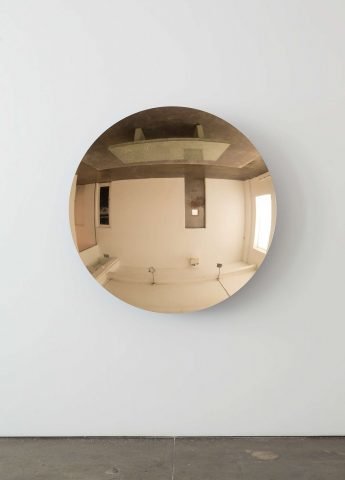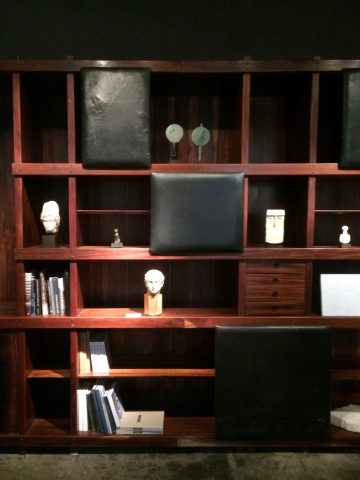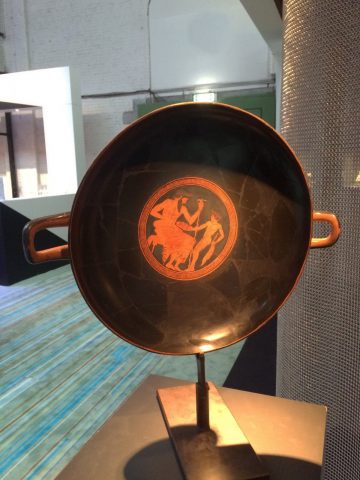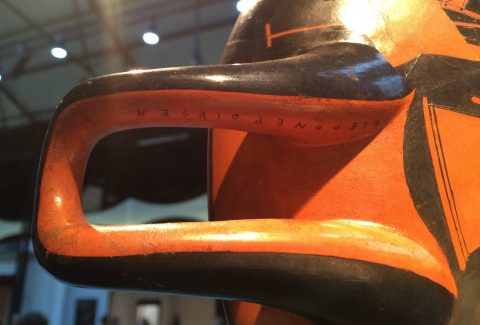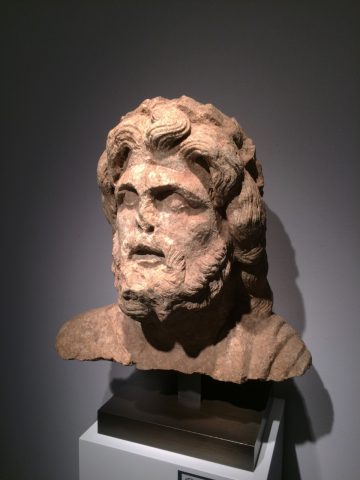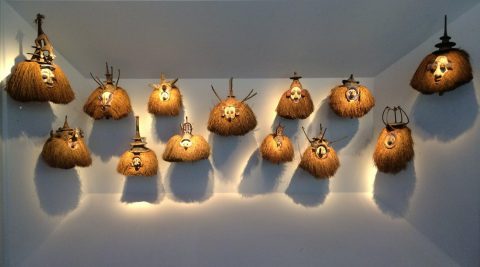BRAFA 2018 confirms the neo-eclectic trend
Brussels’ international fine art fair blends art epochs, regions and styles proving that this is still the way forward.
- Anish Kapoor, Mirror Glow Bronze (Cobalt Blue), 2015, Bronze and lacquer. At Gladstone Gallery.
- Installation view at Axel Vervoordt with bookcase by Sergio Rodrigues. At Axel Vervoordt.
- Eye Steel, South Arabia, 3rd century BC – 1st century A.D., Alabaster. At Axel Vervoordt.
- Chair by anonymous Brazilian architect, 1970s. At Future Anterior.
- Millefleurs with courtiers, Tournai or Bruges, early 16th century, Silk. At De Wit.
- Black-figure vase, Attica, 5th century BC, ceramic. At Phoenix Ancient Art.
- Black-figure vase, Attica, 5th century BC, ceramic (detail with the signature of the potter). At Phoenix Ancient Art.
- Monumental Head of the God Sabazios, Ancient Greece, 2nd century BC, marble. At J. Bagot Arqueologia.
- Installation view of Yaka Masks, DR Congo, early 20th century, mixed materials. At Galerie Didier Claes.
If one were to give an example of eclecticism, a good pick would surely be to imagine a bronze bust of a Roman man next to a mesmerising sculpture by Anish Kapoor. Examples like this are commonplace at BRAFA 2018, currently happening in Brussels and eclectically marking the debut of the 2018 international program of art and antique fairs. For BRAFA is indeed the kind of antique fair that doesn’t shy away from the current trend of merging contemporary art collections with great pieces from distant times and places. More than in previous editions, BRAFA 2018 has taken very seriously the challenge of showing contemporary art along with antiques. Big names in the contemporary art market such as Gladstone gallery—where Kapoor’s sculpture was shown—got to have their booth close to equally big names in the antique market such as Axel Vervoordt.
Vervoordt’s booth was definitely one of our picks. A fantastic bookcase from the 1970s by the father of Brazilian furniture Sergio Rodrigues priced around 160k euros occupied the entire back wall. Its moving leather panels covering the shelves stood in great harmony with the archeological pieces, which are the speciality of the dealer from Antwerp. Among them, we were particularly impressed by a contemporary-looking eye stele from South Arabia, which was used as a wall ornament for funeral ceremonies. At the time of our visit, the stele (priced at 70k euros) was on hold for an unnamed collector.
Brazilian furniture from the 1970s also grabbed our attention at Future Anterior, which presented two greatly crafted chairs designed by an anonymous Brazilian architect. Their pointy edges and pyramidal shape showed interesting intellectual debts to art deco, an artistic current of which Belgium can boast great examples. And if Belgian art deco is certainly one of the things that makes for the country’s great artistic tradition, 16th century tapestry scores no less in that respect. At De Wit Fine Tapestries for example, a stunning fragment with court scenery of Tournai or Bruge manufacture sold for an undisclosed price.
Entering the fair and just reaching the first corner, one could not miss an amazingly restored black-figure vase from 5th BC Attica, placed over a vey special display of steel nets at Phoenix Ancient. We were told that the vase, priced at 190k euros and still available at the time of our visit, was one of the few examples of signed pottery from that period. The handle of the vase indeed bore a little phrase in first-person tense saying “I am made by Hieron”. Not far from Phoenix Ancient and still for the aficionados of Ancient Greek artworks, J. Bagot Arqueologia sold a fascinating monumental head of the Greek god Sabazios for an undisclosed price.
Eclecticism at BRAFA also meant a great selection of classical art from West Africa, whose contribution to 20th century avantgarde was perfectly shown at the BRAFA newcomer Galerie Ratton from Paris. The Ratton’s brothers were pioneers in displaying classical African sculptures as art and not just as mere ethnographic curiosities. The influence of their shows in early 20th century Paris on Modernism can hardly be underestimated. At BRAFA, Galerie Ratton presented some of this legacy through Congolese sculptures along with historical pictures of the dealers in their daily lives. Besides the impact on modernism, today classical African art is on a blast among young collectors who would not approach this otherwise selective niche. The perfect example of this trend was Galerie Didier Claes, whose booth was a stunning presentation of Yaka Masks from DR of Congo. The masks—which came at an entry prince range of 13k-25k euros—were all sold to young collectors who approached this artistic tradition for the first time, and we speculate, were perhaps more used to the contemporary art instead.
Again, BRAFA 2018 will be remembered for its eclecticism and inclusiveness, which was particularly evident from the crowd of visitors that flooded the fair on Sunday—rarely did we see so many young art lovers at antique fairs, spending equal time admiring paintings by emerging artists and masterpieces from the distant past. As the sales assistant at Axel Vervoordt’s booth told us, BRAFA is a fair that always surprises with its large turnout of both collectors and visitors, a characteristic that surely depends on its variegation. Both in terms of sales and public, BRAFA was a great start of the year for antique fairs.
January 29, 2018

